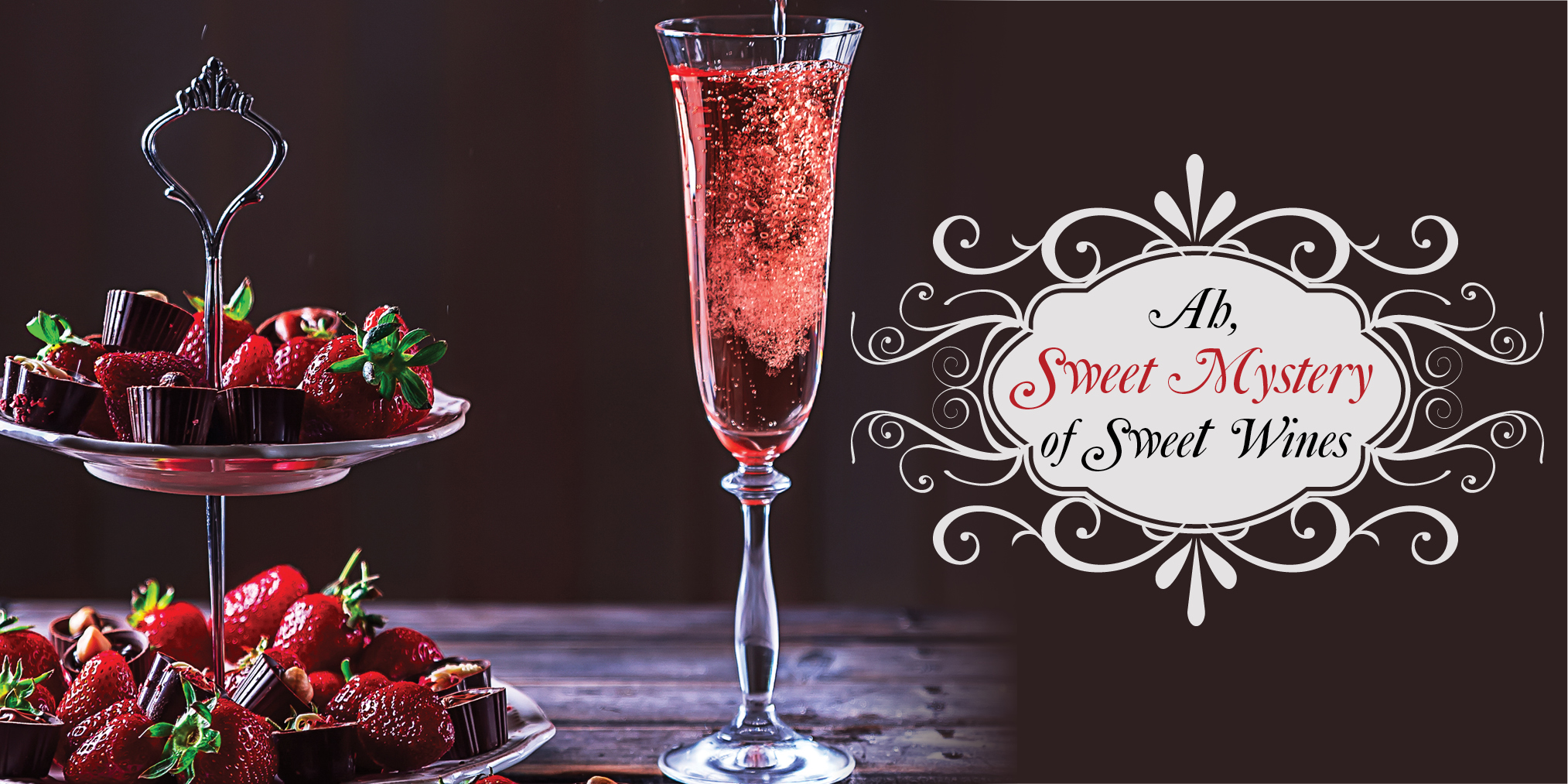Celebrate life with a taste of Virginia’s dessert wines
When you think of wine in Virginia, most people envision reds, whites or rosés. However, it’s worth discovering the whole world of sweet or dessert wines that are becoming more and more popular in our Commonwealth.
Dessert wines are high-alcohol wines that feature concentrated flavors. In the United States, they are defined as any wine containing more than 14% alcohol by volume. Since they are sweeter than or similar in sweetness to the foods they are served with, they have been traditionally served with dessert. They are best served well chilled.
Made from either red or white grapes, they are so rich that you generally drink far less than a regular wine. You’ll typically find dessert wines sold in smaller bottles (.375 ml) as opposed to regular wine bottle sizes.
In general, dessert wines are produced from extra sweet grapes with high levels of both sugar and alcohol through several methods of production. 1) Sugar can be added either before fermentation or afterwards (chaptalization), 2) alcohol such as brandy can be added before all the sugar is fermented (fortification), or 3) water can be removed to concentrate the sugar, as with ice wine.
There are five main types of dessert wines: sparkling, lightly sweet, richly sweet, sweet red and fortified.
Sparkling Dessert Wines
You may not automatically think of a sparkling wine as sweet. This is because the sensation of bubbles and the high acidity makes them taste less sweet. Words on the label that indicate a sweet sparkling wine include: Amabile (Italian; slightly sweet), Doux (French; sweet), Dolce/Dulce (Italian/Spanish; sweet), and Moelleux (French, sweet).
Lightly Sweet Dessert Wines
Refreshing and light, lightly sweet wines are best enjoyed when fresh. They feature fruity flavors and are wonderful complements to spicy Indian or Asian foods. Examples of these include a Gewürztraminer, riesling, or chenin Blanc.
Richly Sweet Dessert Wines
Made with high-quality, unfortified grapes, richly sweet wines can age more than 50 years while still preserving their fresh flavor. They are generally categorized by how they are made:
Late Harvest
Late harvest wines are created from grapes that are left on the vine longer than usual. Similar to raisins, the grapes have naturally dehydrated while on the vine, thus allowing their sugars to become more concentrated. They are typically picked one to two months after the regular harvest.
Tarara Winery’s Late Harvest Petit Manseng 2010 used the minimalist mentality to winemaking. Allowed to slowly ferment for 10 months in Virginia and Jupilles Oak, it naturally ended the way it stands, juicy and powerful with a great acidity.
Noble Rot
Noble rot wines utilize a spore called Botrytis cinerea—the same benevolent mold that rots fruits and vegetables—to add a unique after-flavor of honey and ginger to the wine. Wines made in this method include Sauternes, Barsac, Cadillac and Monbazillac.
Straw Mat
With the straw mat method, grapes are laid out on a straw mat to dry or raisinate before being pressed into wine. Wines here include Italian Vin Santo and Passito, Greek Straw Wines, and German Strohwein.
King Family Vineyards’ Loreley is prepared in the traditional late harvest straw mat style using 100% Petit Manseng. It offers delicate floral notes and flavors of baked apricot.
Ice Wine
Ice wine is rather rare, and can be expensive due to the fact that it only occurs in the rare years when the vineyard freezes. Then, the grapes must be harvested and pressed while still frozen (often in the middle of the night). They are more common in northern regions, like Canada, Germany, and Switzerland and offer a honey-like rich sweetness similar to Noble Rot wines.
Rockbridge Vineyard was the first winery in Virginia (1994) to use cryoconcentration to make dessert wine, using refrigeration technology to control fermentation temperatures. Their V D’Or ice wine was rated higher than a similar wine costing $350 in a blind taste test.
Sweet Red Wines
Sweet red wines have fallen in popularity, but the late-harvest reds that survive in the U.S. are generally created using grapes such as zinfandel, malbec, mourvedre and petite syrah. Wines might include those from the Lambrusco region of Italy or Freisa, from the Piedmont region. Try pairing these with chocolate, plums, cherries, and berries.
Fortified Wines
Fortified wine is created by adding alcohol to still wine during fermentation in order to kill the yeast and halt fermentation. This leaves behind residual and unfermented sugar that creates a sweet wine with a higher alcohol content. Ports, sherries, muscats, and madeiras fall into this category.
Chocolate Wines
Chocolate wine can be either a red or white wine that is infused with chocolate flavors, using the wine as a base. Some are port-style, using a dark red wine. Others mix cream into the wine. The popular ChocoVine is a red wine made with dark chocolate and Dutch cream to create a flavor not unlike Baileys Irish Cream.
Horton’s Rojo Xoco has become a favorite in the tasting room, and reminds one of a raspberry Tootsie Roll pop. It is made from 88% Touriga Nacional, 8% Syrah, and 4% Norton, with a small percentage of dark chocolate essence. Their Blanco Xoco is made using rkatsiteli and vidal blanc along with chocolate essence to invoke a chocolate covered cherry flavor.
There’s no reason why you can’t combine a chocolate wine with a fruit wine to get a whole new taste sensation. Try combining Horton’s Rojo Xoco chocolate wine with Mattaponi Winery’s Odeimin (strawberry) wine to invoke the flavors of a chocolate covered cherry. Mattaponi also offers its own chocolate-covered-strawberry wine called Pow Wow.
As the name suggests, dessert wines are best served with dessert, or simply as a sweet reward. Pair the wine with a food with similar sweetness, with a fruit dessert, or nuts that complement any fruit-forward flavors.
Dessert Wines
- Fabbioli Cellars
- Aperitif Pear Wine
- Rosa Nera
- Royalty
- Raspberry Merlot
- Tarara Winery
- Late Harvest Petit Manseng
- Whitie’s D9
- Doukénie Winery
- Hope’s Legacy Raspberry
- Breaux Vineyards
- Soleil
- Rockbridge Vineyard
- Rockbridge V d’Or ice wine
- King Family Vineyards
- Loreley
Chocolate Wines
- Cooper Vineyards
- Noche
- Horton Vineyards
- Blanco Xoco
- Rojo Xoco
- Barrel Oak Winery
- Chocolate Lab (Port style)
- Glass House Winery
- Meglio del Sesso
(translated as “Better than Sex” - AmRhein Wine Cellars
- Ruby






